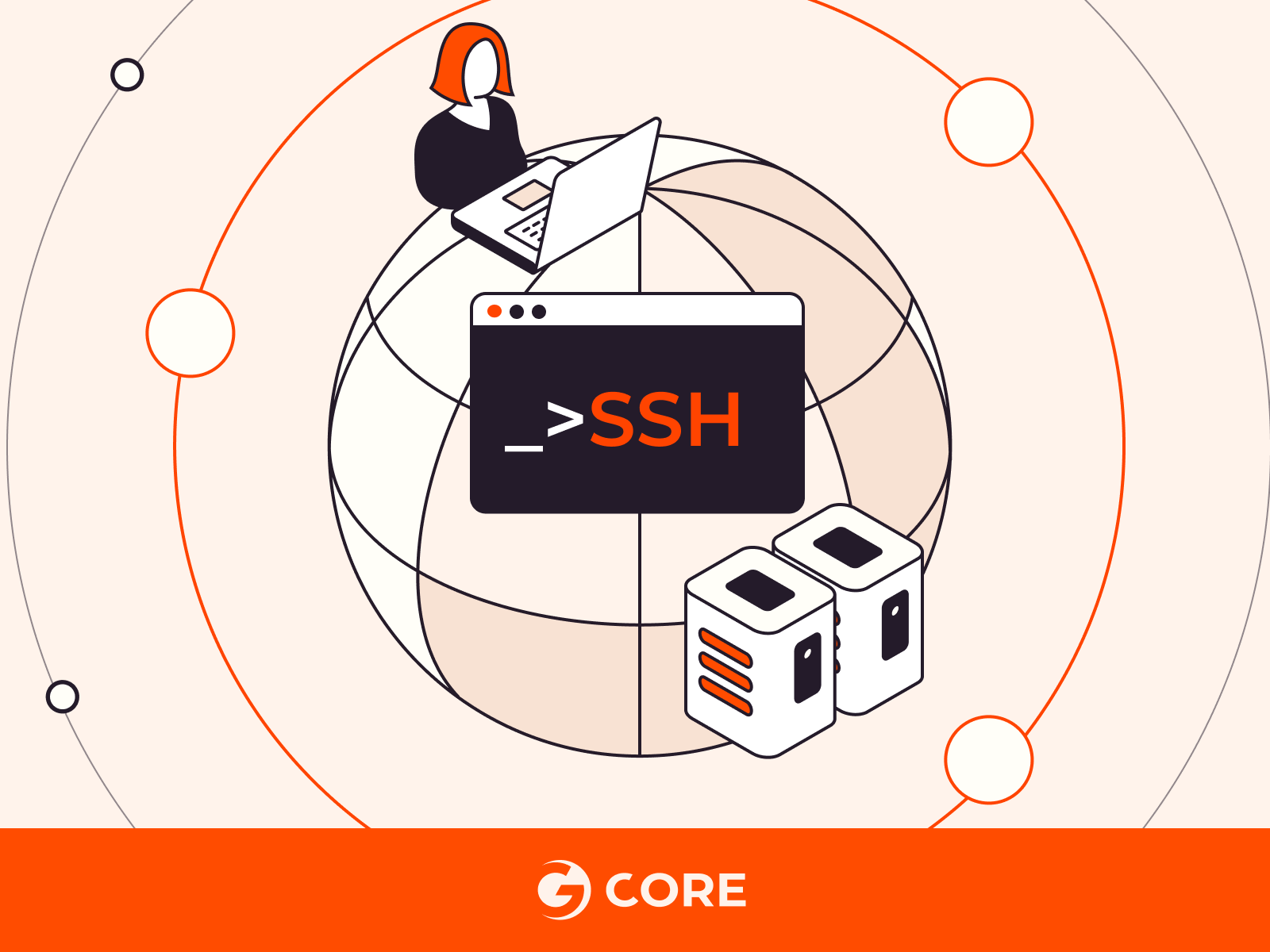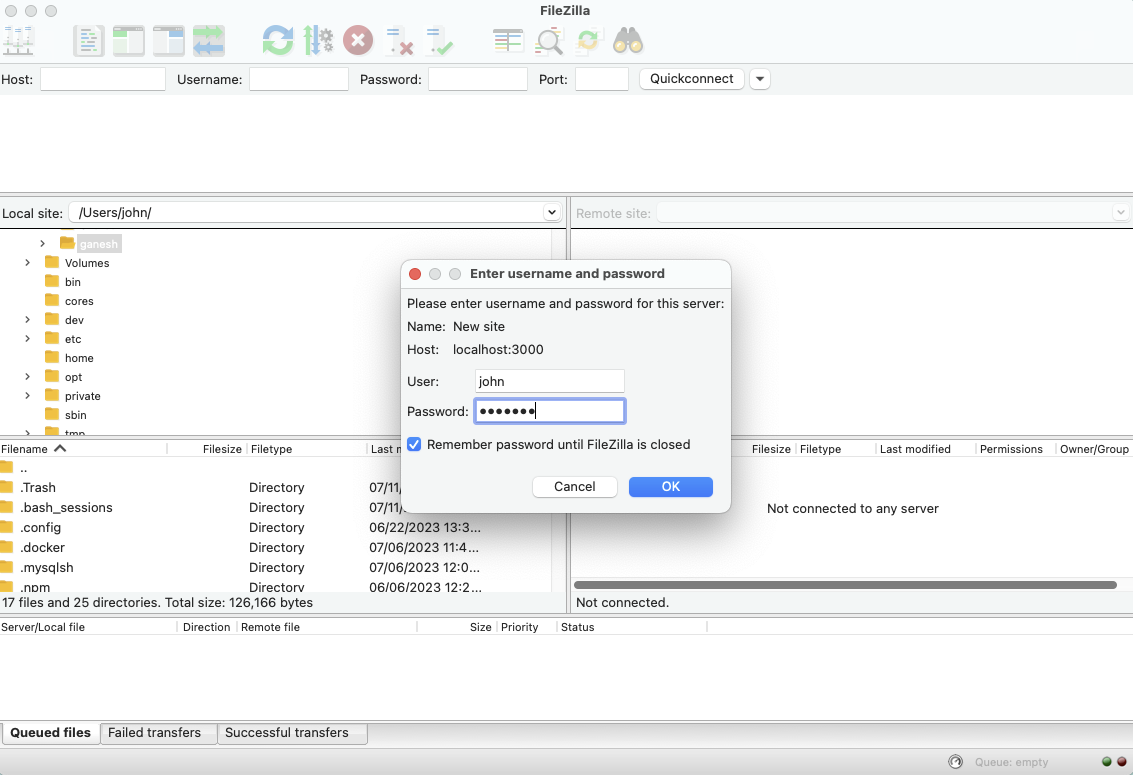Securely Connect Remote IoT P2P SSH Ubuntu: Your Guide For Today's Devices
Getting your Internet of Things (IoT) devices to talk to you, especially when they are far away, can feel like a big challenge. You want to make sure those connections are truly safe, right? It's like making sure your front door is securely fastened, giving you peace of mind that everything inside is protected. For anyone working with remote gadgets running Ubuntu, making sure you can connect securely, using P2P SSH, is a pretty important thing to figure out.
Think about all those tiny computers scattered in different spots – maybe monitoring a garden, checking on machinery, or even keeping an eye on your home. You need to reach them, perhaps to update software or just see what's happening. And, you know, it’s not just about reaching them; it's about making sure no one else can sneak in. This is where learning to securely connect remote IoT P2P SSH Ubuntu becomes incredibly useful, offering a way to talk to your devices directly and safely.
Today, more than ever, keeping your digital conversations private and protected is a big deal. Just as you'd keep an important document securely, perhaps in a place where it cannot be lost or stolen, your IoT device connections need that same level of care. This guide is here to walk you through how to achieve that, so you can manage your remote Ubuntu-powered IoT gadgets with confidence, knowing your connections are firm and free from danger.
Table of Contents
- What is P2P SSH for IoT and Why Does It Matter?
- Why Security Is a Big Deal for Remote IoT Connections
- Getting Your Ubuntu IoT Device Ready for P2P SSH
- Important Security Steps for Your Connections
- Solving Common Connection Problems
- Frequently Asked Questions About Secure IoT Connections
What is P2P SSH for IoT and Why Does It Matter?
P2P SSH, or Peer-to-Peer Secure Shell, is, in a way, like having a secret handshake directly between your computer and your remote IoT device. Usually, when you connect to a device over the internet, you might go through a central server or router that helps direct the traffic. But with P2P, you're looking for a more direct line, often bypassing some of those traditional network hurdles. For IoT, this is really useful because these devices are often in places with tricky network setups, like behind a home router's firewall or on a mobile network, so you know.
The "SSH" part means Secure Shell, which is a network protocol that lets you operate network services securely over an unsecured network. It gives you a safe channel over an unprotected network by using strong encryption. This means that when you're typing commands or sending files, they are protected from prying eyes, so your communication remains private. It's similar to how the offices were securely guarded, keeping sensitive information out of reach.
Why does this matter for IoT? Well, these little devices are everywhere, and they're collecting all sorts of data. If someone could easily tap into that data or take control of your device, that would be a pretty big problem. P2P SSH offers a way to establish a connection that is free from danger, allowing you to manage and update your devices without constantly worrying about who might be listening in. It means you can connect to your devices in a secure manner, even if they are in remote locations.
Why Security Is a Big Deal for Remote IoT Connections
When we talk about securely connecting remote IoT devices, the word "securely" carries a lot of weight. It means doing things in a way that keeps your devices, your data, and your network safe from harm. For instance, you want your connection to be like a firmly fastened door, not loosely so as not to move or be removed. If your connection isn't secure, it's like leaving that door wide open, which is just asking for trouble, you know?
Many IoT devices are, shall we say, a bit simple, and they might not have the strongest security features built in from the start. This makes them attractive targets for people with bad intentions. If an attacker gains access to one of your IoT devices, they could do all sorts of things: steal data, use your device to attack other systems, or even mess with the physical world if your device controls something like a smart lock or a thermostat. We've seen situations where untrusted connections cause problems, like when Firefox can't confirm a connection is secure, and that's something we definitely want to avoid for our IoT setup.
The idea of a secure connection means that the data traveling between your computer and your IoT device is protected or ensures its privacy. It means that the connection itself is trusted, and you can confirm that your communication is safe. As "My text" highlights, an untrusted connection is a problem, and it's our job to make sure our IoT connections are the opposite: completely trustworthy and firmly protected, so your device is not at risk because it's out of date and missing important security and quality updates, that's really important.
Getting Your Ubuntu IoT Device Ready for P2P SSH
Setting up your Ubuntu-based IoT device for P2P SSH is a bit like preparing a special communication channel. You need to make sure both ends are ready to talk to each other directly and safely. This involves a few key steps, starting with getting SSH itself running on your little computer. It's actually not too hard, but you do need to pay attention to the details, in some respects.
Setting Up SSH on Your Ubuntu Device
First things first, your Ubuntu IoT device needs the SSH server software installed. This is the program that listens for incoming SSH connections. You can usually get this done with a couple of simple commands. If you can connect to your device locally for a moment, perhaps with a keyboard and screen, or through a local network connection, that's the easiest way to start. You just open a terminal and type:
sudo apt update sudo apt install openssh-server After that, the SSH server should be running. You can check its status with `sudo systemctl status ssh`. You want to see it listed as 'active (running)', because, you know, if it's not running, it can't listen for connections.
Creating SSH Keys for Safe Access
Using passwords for SSH is okay, but SSH keys are much, much more secure. They're like having a super-complex, unique key for your digital lock, instead of a simple password that someone might guess. You'll create a pair of keys: a private key that stays securely on your local computer (the one you're connecting from) and a public key that goes onto your remote IoT device. This certificate is an important document, and should be kept securely.
On your local machine, you generate the keys like this:
ssh-keygen -t rsa -b 4096 This command asks you where to save the keys and if you want a passphrase. A passphrase adds another layer of security to your private key, which is a pretty good idea. Then, you copy the public key to your IoT device. You can use `ssh-copy-id` if you have password access for now:
ssh-copy-id username@iot_device_ip Replace `username` with your IoT device's username and `iot_device_ip` with its IP address. This puts your public key in the `~/.ssh/authorized_keys` file on the IoT device, so it knows to trust your computer. This is how you firmly establish trust.
Making the P2P Leap with a Relay or Tunnel
Here's where the "P2P" part can get a bit interesting, especially if your IoT device is behind a strict firewall or a NAT (Network Address Translation) setup, which is often the case. Direct P2P SSH often means your IoT device needs to initiate the connection or you need a way to punch through those network barriers. One common approach is to use a "reverse SSH tunnel" or a "relay server."
A reverse SSH tunnel works by having your IoT device (the client) connect *out* to a publicly accessible server (the relay) and create a tunnel back to itself. Then, your local computer connects to that public relay server, and through the tunnel, reaches your IoT device. It's like your IoT device is calling home and leaving a door open for you to walk through. This is actually a very clever way to connect securely when direct access is blocked.
You'd set this up by running a command on your IoT device that looks something like this:
ssh -N -R 2222:localhost:22 username@relay_server_ip Here, `2222` is a port on the `relay_server_ip` that will forward traffic to port `22` (the standard SSH port) on your `localhost` (the IoT device itself). `username@relay_server_ip` is the login for your publicly accessible relay server. From your local machine, you'd then connect to your IoT device *through* the relay server:
ssh -p 2222 username@relay_server_ip This way, your local machine connects to the relay on port 2222, and the relay then sends that connection through the tunnel to your IoT device. It's a neat trick to connect securely even when direct paths are blocked. There are also services and software tools that specialize in making this P2P-like connection easier, abstracting away some of the complexities, so you know.
Important Security Steps for Your Connections
Just getting the connection working isn't the whole story; keeping it secure is just as important, arguably even more so. The definition of securely adverb in Oxford Advanced Learner's Dictionary points to doing things in a manner free from danger, and that's exactly what we're aiming for here. There are several practices you should always follow to ensure your remote IoT P2P SSH Ubuntu setup stays firmly protected.
Keeping Your Ubuntu System Up-to-Date
This is probably one of the simplest yet most effective security measures. Your device is at risk if it's out of date and missing important security and quality updates. Software developers constantly find and fix security weaknesses. If you don't apply these updates, your device remains vulnerable to known attacks. It's like leaving a window unlocked after the manufacturer has sent you a new, more secure lock.
Make it a habit to regularly update your Ubuntu IoT devices. You can do this with these commands:
sudo apt update sudo apt upgrade sudo apt dist-upgrade sudo apt autoremove Consider setting up automatic updates for security patches if your deployment allows it, but always be careful with automatic full upgrades, as they might sometimes break things. However, keeping security patches current will help Windows run more securely, and the same goes for Ubuntu.
Firewall Rules: A Must-Have
A firewall acts like a guard for your device, deciding what network traffic is allowed in and out. For an IoT device, you really want to limit access to only what's absolutely necessary. If your device is only supposed to accept SSH connections, then your firewall should block everything else. Ubuntu comes with UFW (Uncomplicated Firewall), which is fairly easy to use.
To allow SSH traffic, you'd typically do:
sudo ufw allow ssh sudo ufw enable If you changed your SSH port from the default 22, you'd specify that port instead, for example: `sudo ufw allow 2222/tcp`. This helps ensure that only authorized connections can even attempt to reach your SSH server, which is a pretty good layer of defense.
Strong Passwords and Key Management
While we prefer SSH keys, there might be situations where you still use passwords. In those cases, use very strong, unique passwords. Never use default passwords or easy-to-guess ones. For your SSH keys, protect your private key with a strong passphrase. This passphrase should be different from any other password you use.
Also, make sure your private key file has strict permissions, so only you can read it. On Linux, this is usually `chmod 400 ~/.ssh/id_rsa`. Treat your private key like a highly sensitive document; if it falls into the wrong hands, your secure connections are compromised. This is about keeping things securely, so as not to be found.
Two-Factor Authentication for Extra Safety
Adding two-factor authentication (2FA) to your SSH access is a fantastic way to boost security. Even if someone somehow gets hold of your private key and its passphrase, they would still need a second piece of information, usually from a physical device like your phone, to log in. This makes it much, much harder for unauthorized access.
You can set up 2FA for SSH on Ubuntu using tools like Google Authenticator's PAM module. This adds an extra step to the login process, requiring a time-based one-time password (TOTP) after your SSH key. It's like having two securely guarded gates instead of just one, so your connection is untrusted you have asked firefox to connect securely to www.xxxxxxxxxxxx.com, but we can't confirm that your connection is secure, is less likely to happen.
Solving Common Connection Problems
Even with the best planning, you might run into a few bumps along the road when trying to securely connect remote IoT P2P SSH Ubuntu. It's just part of working with technology, you know? Sometimes the issue is something simple, sometimes it's a bit more involved. Don't get discouraged if your first attempt doesn't work perfectly; that's actually pretty normal.
One common problem is incorrect firewall settings. If you can't connect, the first thing to check is if your firewall on the IoT device (and any intermediate firewalls) is allowing SSH traffic on the correct port. Remember, `sudo ufw status` on Ubuntu can tell you what's allowed. If you're using a relay server, make sure its firewall also permits connections on the tunnel port, too it's almost a given.
Another frequent issue is related to SSH keys. Double-check that your public key is correctly placed in the `~/.ssh/authorized_keys` file on the IoT device and that its permissions are set correctly (typically `600`). Also, make sure your private key on your local machine has `400` permissions. If you're using a passphrase, confirm you're typing it correctly. Sometimes, people forget to load their SSH key into their agent, which can also cause connection failures, you know, it happens.
Network issues can also play a role. Is your IoT device actually connected to the internet? Can it reach the relay server? Can your local machine reach the relay server? Simple `ping` commands can often help diagnose basic network reachability. If you're using a reverse tunnel, make sure the tunnel is actually active on the IoT device. If the IoT device reboots, the tunnel might not restart automatically unless you've set it up as a service, which is a common oversight, so.
Finally, checking the SSH server logs on your IoT device can provide valuable clues. These logs often tell you why a connection attempt failed. You can usually find them in `/var/log/auth.log` or `/var/log/syslog`. Looking at these logs is like asking the device what went wrong, and they usually have pretty good answers, if you know where to look, that is.
Frequently Asked Questions About Secure IoT Connections
How do I securely access my remote IoT device?
You can securely access your remote IoT device by using SSH (Secure Shell) with key-based authentication, which is much safer than passwords. Setting up a reverse SSH tunnel or using a dedicated relay service can help you connect even if your device is behind a firewall or NAT. Keeping your device's software updated and configuring a firewall on the device itself are also very important steps.
What is P2P SSH and how does it work for IoT?
P2P SSH refers to establishing a direct or near-direct secure shell connection between your local computer and a remote IoT device, often bypassing traditional network routing challenges. For IoT, it commonly works by having the remote device initiate an outgoing connection to a publicly accessible relay server, creating a "tunnel." Your local machine then connects to this relay server, and through the tunnel, reaches your IoT device, allowing for a secure, peer-like interaction.
Is Ubuntu a good OS for IoT security?
Yes, Ubuntu is generally considered a good operating system for IoT devices, especially concerning security. It benefits from a large community that actively maintains and updates its packages, including security patches. Ubuntu offers robust features like UFW (Uncomplicated Firewall) and strong user management, which, when properly configured, provide a solid foundation for securing IoT deployments. Regular updates help keep your system protected against newly discovered vulnerabilities.
As we've explored, getting your remote IoT devices to communicate securely using P2P SSH on Ubuntu involves a few thoughtful steps, but it's totally worth the effort. By understanding how to set up SSH keys, manage your network connections, and keep your systems updated, you are creating a connection that is truly free from danger. It's about making sure your digital conversations are always in a secure manner, like checking all personal items are securely stowed. Learn more about secure remote access on our site, and find more tips on managing your IoT devices.

How To Securely Connect Remote IoT P2P SSH Ubuntu

How To Securely Connect Remote IoT P2P SSH Ubuntu

How To Securely Connect Remote IoT P2P SSH Ubuntu